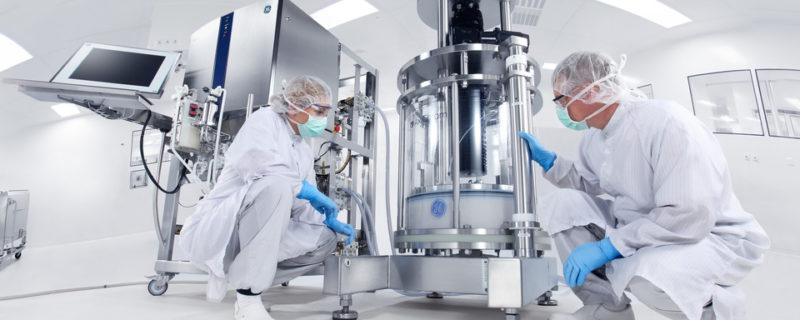
Addressing Challenges in Downstream Biomanufacturing with a Platform Purification Approach
Podcast: Download (Duration: 16:21 — 22.5MB)
Subscribe: Apple Podcasts | TuneIn | Deezer | RSS | More
Show Notes:
I began the interview by asking Jonathan about what he saw as the biggest challenges in downstream bioprocessing. He said that depending on when you asked the question over the past 5-10 years, you would get a different answer. Looking at the state of the industry today, Jonathan felt that the diversity of projects that facilities are being asked to handle is the biggest challenge. It was quite common 10-20 years ago for facilities to be dedicated to manufacturing a specific product or two. Now the majority of facilities are asked to handle multiple projects that can cause significant facility fit challenges.
Because of this, platform technologies and approaches are becoming more important than ever as a method for reducing process development time and ensuring that a facility can handle multiple types of projects. These projects often include multiple antibody structures and different cell lines. Downstream must have enough flexibility to handle this diversity. The key technology to drive facility fit is the use of platform tools.
Next, we talked about how GE Healthcare specifically has worked to address these problems through their bioprocess portfolio. Jonathan explained that primarily it involves looking at the latest wave of molecules in the early clinical pipeline and evaluating how they can develop technologies to address these needs in commercial manufacturing. Using protein A as an example, it provides a good facility fit for a broad class of antibodies, but the increase in antibody fragments led GE Healthcare to develop three products to meet the purification needs for different types of fragments. In addition, they are evaluating new solutions for purification of other types of products including recombinant blood factors and viruses for the vaccine market.
I was interested in the new MabSelect PrismA™ protein A resin and the way that it addresses the challenges Jonathan described. He said that protein A is the most tangible platform purification example, but even with its advantages, it requires constant evaluation and evolution based on industry needs. MabSelect PrismA is a next generation protein A resin designed to response to the significant cell culture productivity increases over the past 2 decades, almost a 100-fold increase. This productivity increase has made the protein A step a bottleneck and MabSelect PrismA was created to break that bottleneck by providing a good fit for high titer processes and enabling pre-packed technology.
I asked how he recommended selecting the resin that is the best fit for different projects. He said that MabSelect PrismA should be the first choice for any new manufacturing process because it does have wide applicability across all manufacturing scales and process titers. It also has significant advantages over previous resin generations. Advantages include its ability to handle capacity never before achieved and improved cleanability.
Then I asked Jonathan to elaborate on the cleanability issue and bioburden control in downstream, which has been a widely discussed topic. Historically one limitation with protein A has been the ligand resistance to sodium hydroxide, which is the most commonly used and well accepted way to clean and sanitize. With its good kill kinetics and easy neutralization, it is a great choice. However, protein A has had limited compatibility.
One of the biggest challenges for maintaining bioburden control with protein A is that it is the first step after the bioreactor and all the nutrients and growth factors in the cell supernatant make a rich environment for bacteria to flourish. This problem is compounded when only relatively weak cleaning chemicals can be used. These factors makes protein A columns more prone to bioburden contamination and harder to remediate. One of the big drivers in MabSelect PrismA development was to increase alkaline stability, thus permitting higher concentrations of sodium hydroxide. Challenges with spore forming bacteria was also an area of focus, as they are more difficult to kill. GE developed a recommendation for the use of paracetic acid to sanitize filtration cassettes that is very effective. Higher concentrations of sodium hydroxide and paracetic acid in remediation provide very good assurance against bioburden contamination.
Next I asked Jonathan what challenges remain in the protein A capture step and he thought that the cost of protein A has been and continues to be seen as a challenge. He believes that this is a challenge that can only be solved through technical innovations. MabSelect PrismA lowers the cost of manufacturing vs. previous generation of resins, but there is always room for improvement. Areas to explore include new ways to use the protein A ligand and a continued focus on both improvements in technical effectiveness and cost effectiveness.
I closed the interview by asking Jonathan if he had anything else he would like to add for listeners? He encouraged people to have a dialogue with companies like GE that are developing solutions and to help guide investment in the right areas and at the right times. An open dialogue is key in developing production and purification technologies that are best suited for challenges of the industry.
